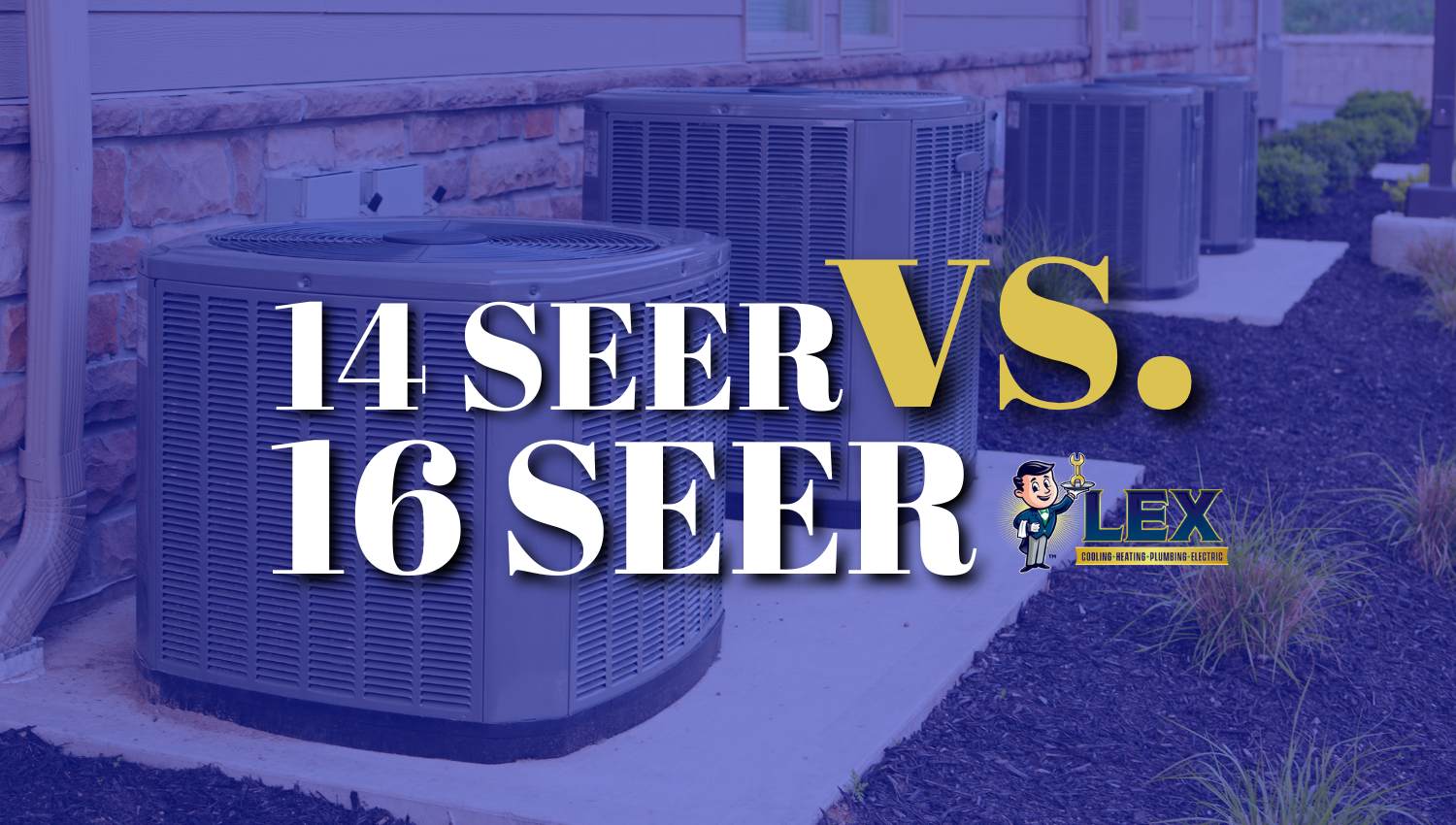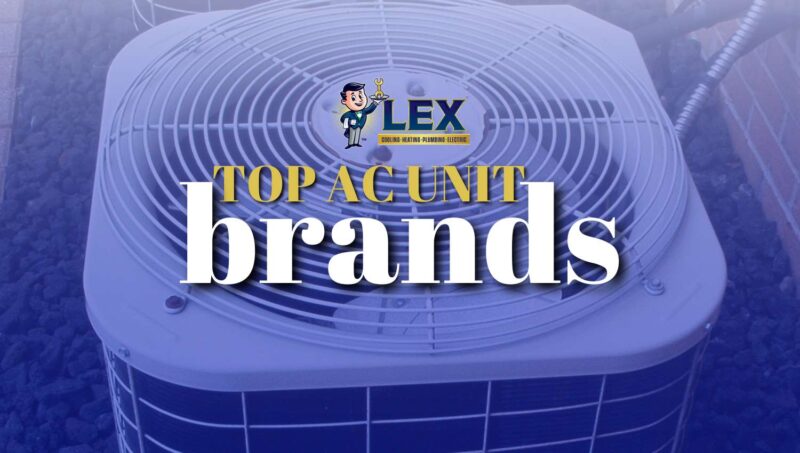When searching for a new HVAC unit for your home, there are a lot of different factors that you’ll have to consider. One major factor to consider is how energy-efficient a given system is, which can be indicated by the unit’s SEER rating. Understanding and comparing SEER ratings can help you make informed decisions about your cooling system, ensuring you strike the right balance between energy savings and comfort. However, it can be hard to choose between systems that have very similar SEER ratings, like 14 SEER units and 16 SEER units.
In this blog post, we’ll compare and contrast 14 SEER vs. 16 SEER units so you can better understand how they stack up against each other. If you’re looking for a new air conditioner or heat pump for your home or business, the Carrollton heating and air professionals at Lex are here to help. We can break down the differences between various systems and help you choose the right one for your specific needs. Not only that, but we can repair, replace, and maintain your new unit whenever you need our services.
Call (972) 217-8955 or contact us online to schedule services with us or to learn more about how we can help you.
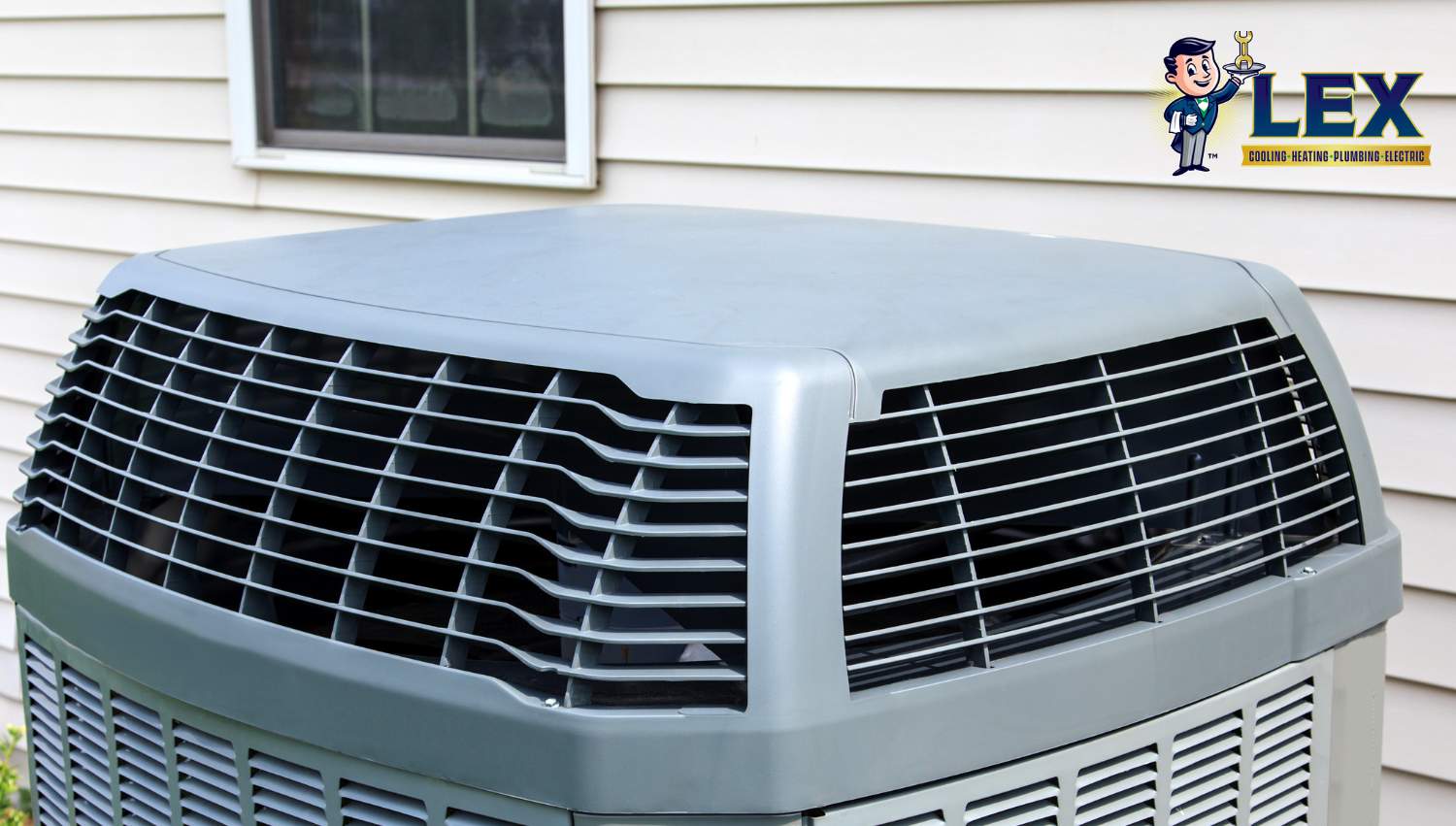
Understanding Seasonal Energy Efficiency Ratio
Before we can compare 14 SEER and 16 SEER units, we need to understand what SEER means. The Seasonal Energy Efficiency Ratio (SEER) is a metric used to measure the efficiency of air conditioning systems. It represents the ratio of cooling output (measured in BTUs) to the energy input (measured in watt-hours) over an entire cooling season, which usually runs from spring to fall.
In simpler terms, SEER tells you how efficiently your air conditioning system uses electricity to cool your home. The higher the SEER rating, the more efficient the system is at cooling. This means that a higher SEER-rated system will typically consume less energy to produce the same amount of cooling compared to a lower SEER-rated system.
SEER ratings are important for homeowners because they directly affect energy costs over the lifespan of the air conditioning system. When compared to other units, higher SEER units tend to cost more upfront but also tend to provide more long-term savings as a result of their increased energy efficiency.
Factors Influencing SEER Ratings
Several factors can influence the SEER rating of an air conditioning system or heat pump. These include:
- The size of the system
- The design of the system
- The type of compressor used (single-stage, two-stage, or variable-speed)
- The efficiency of the evaporator and condenser coils
- The type of refrigerant used
Generally, as a system gets older, it becomes less energy efficient. This means that newer units with more high-quality components tend to have higher SEER ratings than those with older or outdated parts.

What is a 14 SEER Air Conditioner?
A 14 SEER air conditioner is an air conditioning system designed to provide cooling efficiency equivalent to 14 BTUs (British Thermal Units) of cooling per watt-hour of electricity consumed over a typical cooling season.
Air conditioners and heat pumps are required to meet a certain minimum SEER rating in order to comply with national standards. In Texas, an air conditioner cannot have a SEER rating lower than 14, meaning that a 14 SEER system is compliant with energy efficiency standards, but is at the lower end of efficiency.
A 14 SEER AC unit will be less energy efficient than a higher SEER unit, meaning that it will cost you more on your electrical bills.
What is a 16 SEER Air Conditioner?
A 16 SEER air conditioner is an air conditioning system designed to provide 16 BTUs of cooling per watt-hour of electricity over a typical cooling season. These systems require less energy than other, lower-rated systems, providing users with greater energy efficiency and energy savings.
Comparing 14 and 16 SEER Air Conditioners
When deciding between a 14 SEER and a 16 SEER air conditioner, it’s crucial to understand the key differences in efficiency and performance. Below, we’ll go into detail about the differences between these two kinds of systems so that you can better understand how a system’s SEER rating can affect energy efficiency, energy costs, and other factors.
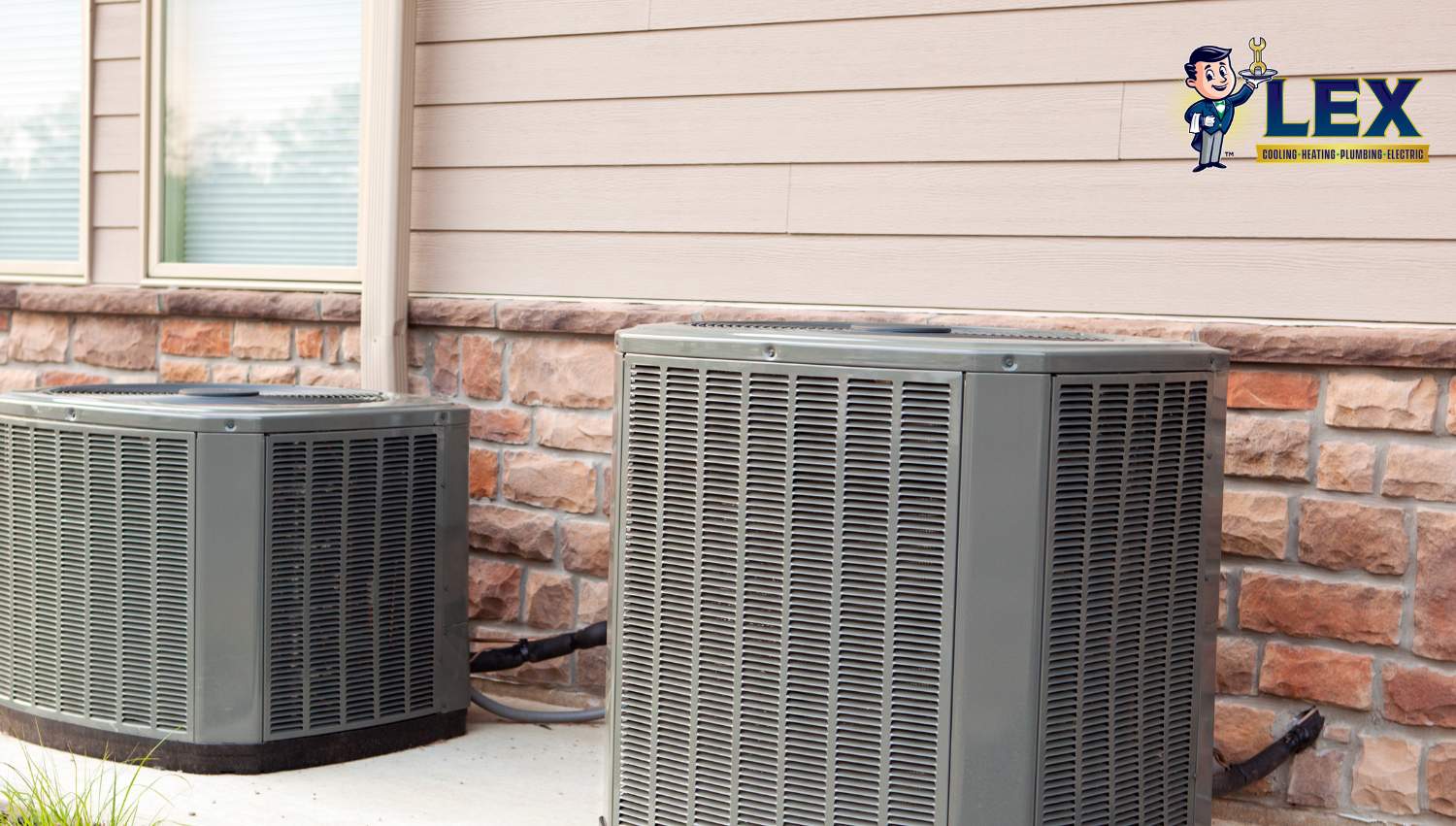
Cost Savings Comparison
When comparing the cost savings between 14 SEER vs. 16 SEER air conditioners, it’s essential to consider both the short-term and long-term expenses associated with these systems. In general, a higher SEER unit will be more expensive than a lower SEER unit.
However, while a 16 SEER unit typically has a higher upfront cost than a 14 SEER unit, it will provide greater energy efficiency, which can reduce a home’s monthly utility bills over time. Homeowners in Texas are exposed to hot climates and longer cooling seasons, meaning they may benefit more from investing in a 16 SEER unit due to its lower energy costs.
Environmental Impact
In terms of environmental impact, opting for a 16 SEER air conditioner can contribute to lower carbon emissions and reduced energy consumption compared to a 14 SEER unit. Higher SEER ratings indicate higher energy efficiency, meaning less energy is required to achieve the same level of cooling.
By choosing a 16 SEER air conditioner, homeowners can lessen their carbon footprint and support sustainability efforts while enjoying comfortable indoor temperatures.
Climate Considerations
Climate considerations play a significant role in determining the optimal SEER rating for an air conditioning system. In regions with milder climates or shorter cooling seasons, a 14 SEER unit may suffice, providing adequate cooling without the need for higher efficiency models.
However, in hotter climates or areas with prolonged periods of high temperatures, a 16 SEER air conditioner may be more beneficial, offering improved efficiency and potentially lower energy costs over time.
To ensure optimal performance and cost-effectiveness, it’s important to evaluate local climate conditions and cooling requirements when deciding between 14 and 16 SEER units.
Installation Considerations
Both 14 and 16 SEER air conditioners require professional AC installation to ensure proper operation and efficiency. However, it’s essential to consider potential differences in installation requirements between the two units.
A unit with a higher SEER rating, like a 16 SEER unit, may require more intricate installation procedures due to advanced features or technologies, potentially leading to higher installation costs. Homeowners should consult with HVAC professionals to determine the specific installation considerations for their chosen SEER rating.

Maintenance Requirements
In terms of maintenance, 14 and 16 SEER air conditioners typically have similar upkeep needs. Regular maintenance, including filter replacement, coil cleaning, and system inspections, is crucial for both units to ensure optimal performance and longevity.
However, it’s important to note that models with a higher SEER rating often have more advanced components, which may require additional maintenance or more specialized attention. In general, the maintenance for a 14 SEER vs. 16 SEER unit will be similar, but it’s still important to factor in the design of a unit when considering future maintenance costs.
Long-Term Value
When evaluating the long-term value of an HVAC unit, factors like energy savings, durability, and reliability come into play. While a 16 SEER air conditioner may have a higher initial investment compared to a 14 SEER unit, its enhanced efficiency can lead to greater energy savings over its lifespan.
Additionally, higher SEER-rated models may come with extended warranties or premium features that contribute to their long-term value proposition. Homeowners should consider their budget, cooling needs, and expected usage to determine the most cost-effective and value-driven option.
Feel free to use Lex Air’s SEER Energy Savings Calculator to see just how much you can save with a newer unit.
Customer Satisfaction and Comfort Levels
Customer satisfaction and comfort levels are paramount when comparing 14 SEER vs. 16 SEER AC units. While both units are designed to provide reliable cooling, a 16 SEER air conditioner may offer enhanced comfort features, such as variable-speed operation or improved humidity control, that contribute to a more comfortable indoor environment.
When selecting between 14 and 16 SEER units, homeowners should assess their comfort preferences and prioritize features that align with their cooling requirements. Ultimately, customer satisfaction and comfort should be a primary consideration when making this decision.

Is a Higher SEER Rating Always Better?
It depends on your priorities when it comes to your AC’s energy efficiency. If you’re looking for the lowest upfront cost, a lower SEER rating would be your best bet. However, for those looking for the highest long-term savings and/or the lowest overall environmental impact, a higher SEER rating will almost always be better.
For instance, a SEER rating of 16 is considered very energy efficient and can eventually offset the initial cost of the system with how much it saves you on your energy bills. Plus, higher-rated systems can provide the greatest energy efficiency, which can drastically reduce a home’s carbon footprint. If you’re looking for the most energy-efficient unit possible, the higher the SEER rating, the better.
What SEER Rating Is Right For Me?
When choosing between 14 SEER and 16 SEER AC units, how do you know what kind of SEER rating will be best for you? The answer will depend on various factors, including your budget, cooling needs, and energy efficiency goals.
Since Texas tends to be warmer than most other places in the country, an AC unit with a SEER rating of 16 may be best for you and your family. However, if your budget can’t accommodate a 16 SEER unit and/or your home is well insulated, a 14 SEER unit may suit your needs just fine.
Additionally, if you opt for a lower SEER unit, there are still ways to increase your system’s energy efficiency or allow it to maintain maximum efficiency for as long as possible. These include things like programmable thermostats, proper installation, home automation zoning, and regular AC maintenance.
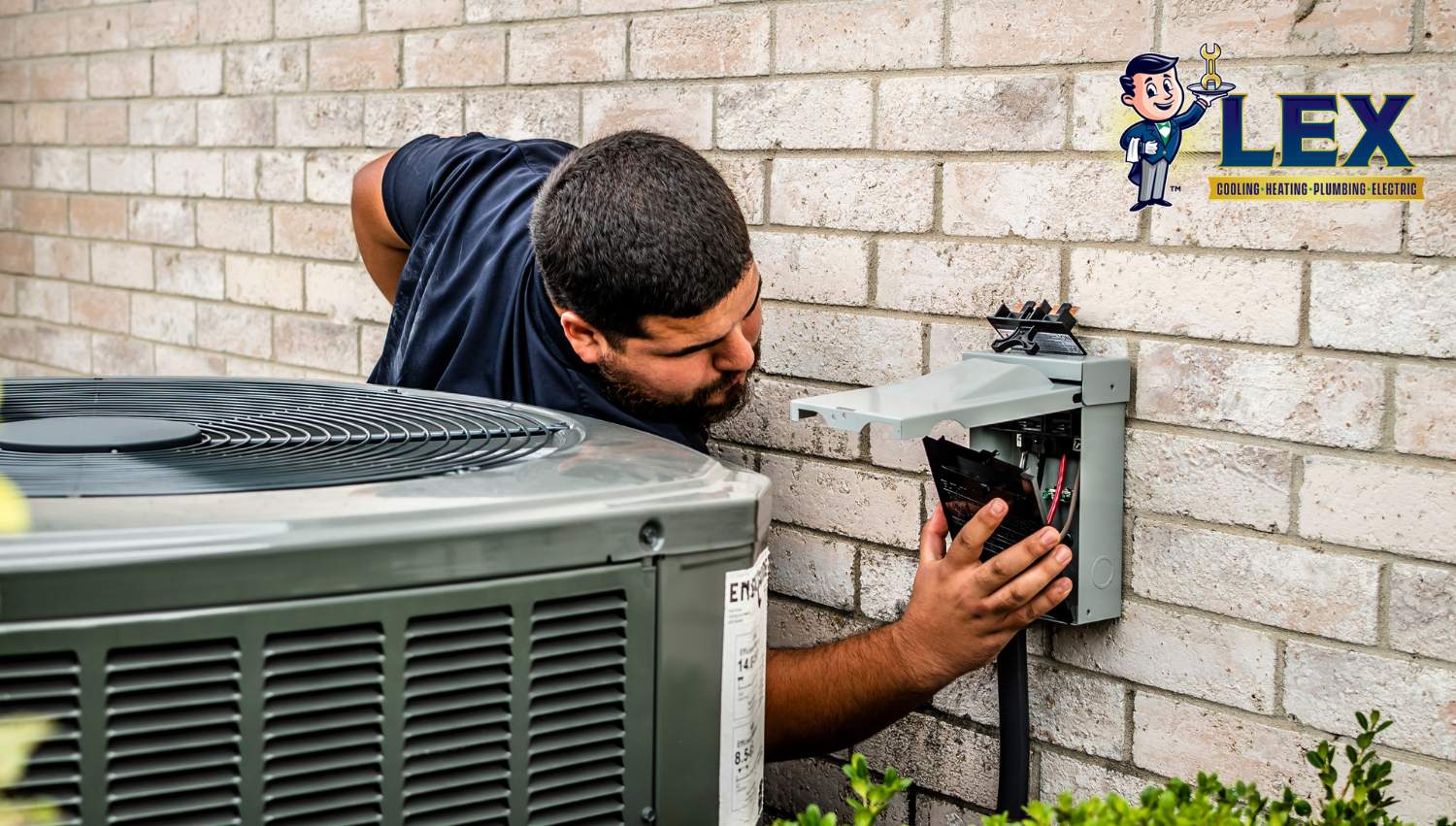
Choose the Right SEER Rating for Your Home with Help From Lex Air Conditioning and Heating
If you’re having trouble choosing between a 14 SEER system and a 16 SEER system, turn to the Carrollton AC service experts at Lex Air Conditioning and Heating. We understand that selecting the right SEER rating for your home is a crucial decision that can impact your comfort, energy bills, and environmental footprint. With our expertise in HVAC systems and commitment to customer satisfaction, we’re here to help you navigate the options and choose the optimal SEER rating tailored to your specific needs.
Whether you’re considering a 14 SEER unit, a 16 SEER unit, or a unit with an even higher SEER rating, our team of experienced professionals will take the guesswork out of the process and ensure you’re able to make an informed decision.
Ready to upgrade your home’s cooling system? Call (972) 217-8955 or fill out our online form to schedule our AC installation or replacement services today.

